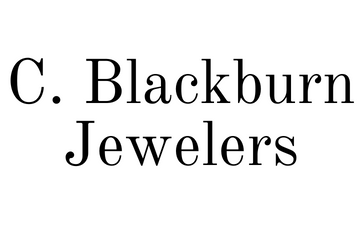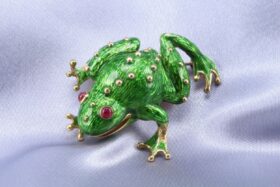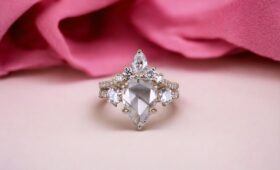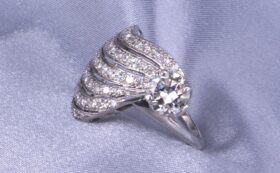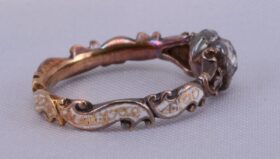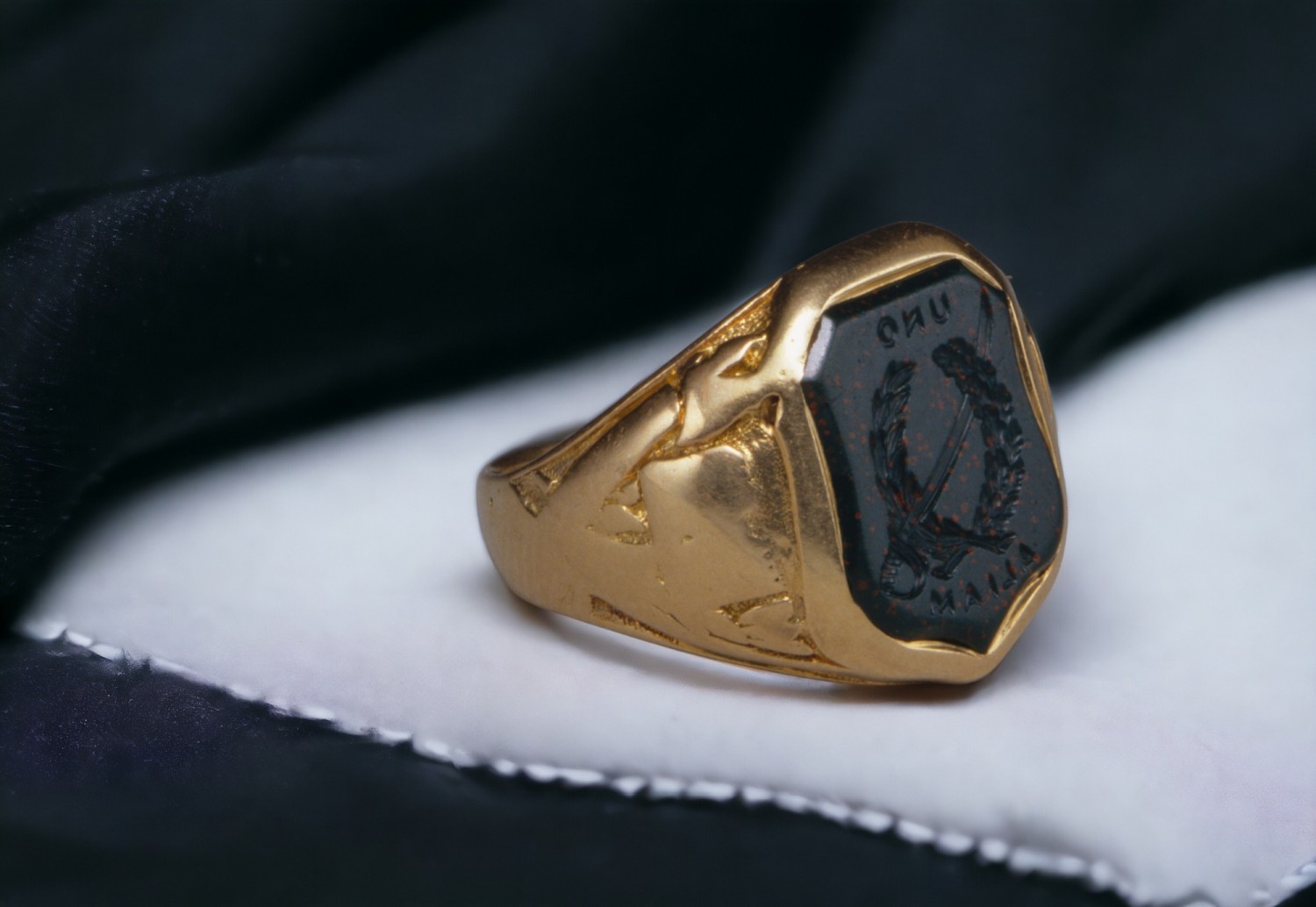
18 Apr Sell Intaglio Rings & Antique Jewelry in San Diego
You can sell intaglio jewelry, especially intaglio rings, for a generous cash price to C. Blackburn Jewelers in La Jolla. Opposite of cameo carving, which creates a relief design, intaglio designs are created by cutting into the surface of a gemstone, glass, or metal, so that the design sits below the surface. While this style of antique jewelry fell out of favor during the Victorian period (in favor of Cameos) it never entirely disappeared.
For example, a number of years ago Carl Blackburn, the owner of C. Blackburn Jewelers, acquired an antique intaglio ring made by Tiffany & Co. during the 1920s. The ring featured an amethyst carved with an intaglio of the seal of the Bishop of Arizona — while the shoulders of the ring were embellished with a lamb bearing the flag of the Lord, a Bishop’s cross, and a shepherd’s staff.
Carl is always on the lookout for such historically significant intaglio rings. He has a deep understanding of their worth on the estate jewelry market, and an admiration for the artistic skill involved. If you would like to sell an intaglio ring or fine jewelry, please contact C. Blackburn Jewelers today for a free cash appraisal.
Text details and photos of your antique intaglio jewelry to 619-723-8589, or leave us a voicemail at 858-251-3006.

The Origins of Intaglio Rings & Jewelry
The art of intaglio was practiced in ancient Mesopotamia and Egypt, but it flourished in the classical world, notably in Greece and Rome. Early examples were made on semi-precious stones and served not only as decorative jewelry but also as personal seals or signets. These seals, often set into rings, were pressed into wax to secure and authenticate documents, proving the identity of the sender.
The Egyptians, for example, often made scarab amulets and seals that were engraved with hieroglyphs and symbols believed to protect both the living and the dead (in the afterlife). Meanwhile ancient Greek and Roman intaglios often feature highly detailed scenes on gemstones such as black onyx, which then were set in rings, necklaces, and bracelets.
Intaglio signet rings became very popular during the Medieval and Renaissance period. Gemstone rings were engraved with the wearer’s personal emblem, family crest, or initials. During the 17th and 18th century, Stuart Crystal and “memento mori” rings were made to remind the wearer of their mortality. The intaglios in these rings depicted skulls, skeletons, or other reminders of life’s transience. For more information, see our post on how to sell a memento mori ring.
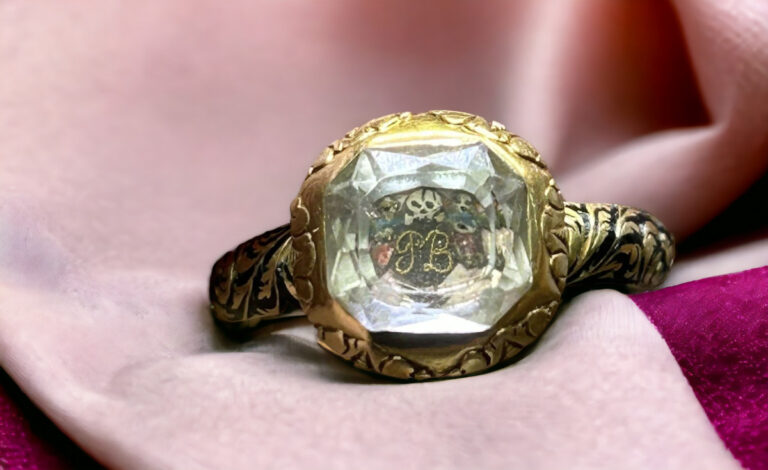
Why Did Cameo Jewelry Replace Intaglios?
During the Victorian Era (1837 – 1901) cameos replaced the desire for intaglio rings and jewelry. There are a number of reason for this shift in popularity. For one thing, the Victorian era was characterized by a deep sense of romanticism and sentimentality. Cameos, with their raised, sculptural profiles, often depicted themes of love and mythology that appealed to the Victorian taste for narrative and emotional depth.
Compared to intaglios, cameos could more easily portray the delicate features of a woman’s profile or intricate floral designs, resonating with the Victorian fascination with beauty, nature, and personal storytelling.
In addition, the 19th century saw significant advancements in technology, including the development of new methods for producing cameos. This included the use of shell and lava, which were softer and easier to carve than the gemstones typically used for intaglios. These materials made cameo production more efficient and affordable, allowing cameo jewelry to become accessible to the general public.
Fashion trends of the Victorian era also favored the cameo. The intricate and delicate designs of cameos complemented the elaborate clothing styles of the time, including the use of lace, ribbons, and detailed embroidery. Cameos were versatile and could be worn as brooches, necklaces, earrings, and bracelets, making them a popular alternative to intaglio jewelry among Victorian women seeking to accessorize their outfits.
Whether you would like to sell a cameo or sell antique intaglio jewelry, contact C. Blackburn Jewelers in San Diego today. Get a free market appraisal of your item by texting a message with photos to 619-723-8589, or call us at 858-251-3006.
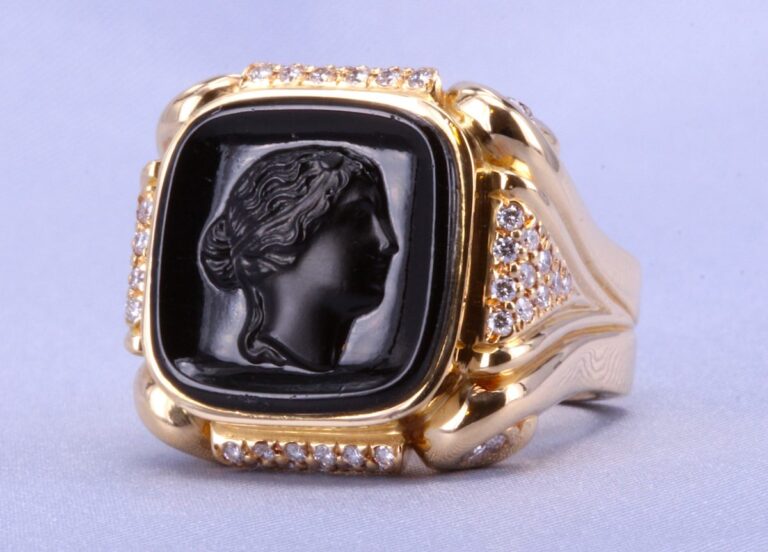
How Antique Intaglio Jewelry Was Made
The materials used for antique intaglio rings and jewelry have varied over the centuries, ranging from soft metals to hard gemstones like carnelian, chalcedony, agate, and sardonyx. The choice of material often depended on the availability of resources, the technology available to work the material, and the status of the wearer. The intricate work required skilled artisans, as they had to carve the design in reverse.
The process for making intaglio jewelry follows generally these steps:
Step 1: Design Preparation: The artist starts by choosing the material for the intaglio and planning the design. This often involves sketching the design on paper before transferring a rough outline onto the stone or metal.
Step 2: Initial Engraving: Using a series of specialized tools, the engraver begins to cut the intaglio into the gemstone or metal. Tools such as the burin (a type of chisel) or a diamond-tipped tool are used to incise the design into the surface. The choice of tool depends on the material’s hardness and the detail required in the design.
Step 3: Detailing: Once the basic shape is carved, finer tools are used to add detail to the intaglio design. This stage requires a high level of skill and precision, as the artist must create a design that will appear correctly when the intaglio is used to make an impression.
Step 4: Finishing Touches: After the engraving is complete, the piece is cleaned and polished. Any final adjustments to the intaglio design are made at this stage.
Step 5: Mounting: The finished intaglio is then set into a piece of jewelry, such as a ring, pendant, or brooch. The setting is designed to protect the edges of the intaglio and to showcase the engraved design.
While intaglio engravers usually follow these 5 steps, that doesn’t mean unique challenges aren’t faced. For example, the hardness of the gemstone directly affects the engraving process. Harder gems require more time and effort to engrave but can yield incredibly detailed and durable results.
The size of the intaglio and the complexity of the design also can greatly influence the time and skill required to complete the piece. Since the design is intended to create an impression, the engraving must be done in reverse. This requires the engraver to think and work in a mirror image of the final design.
While not as popular as it once was, intaglio jewelry continues to be made by a select number of jewelry artisans who have taken the time to master this old-world craft. Despite the advent of modern technologies, the traditional methods of intaglio engraving continue to be revered and practiced by these artisans, who are preserving the legacy of this ancient art form.
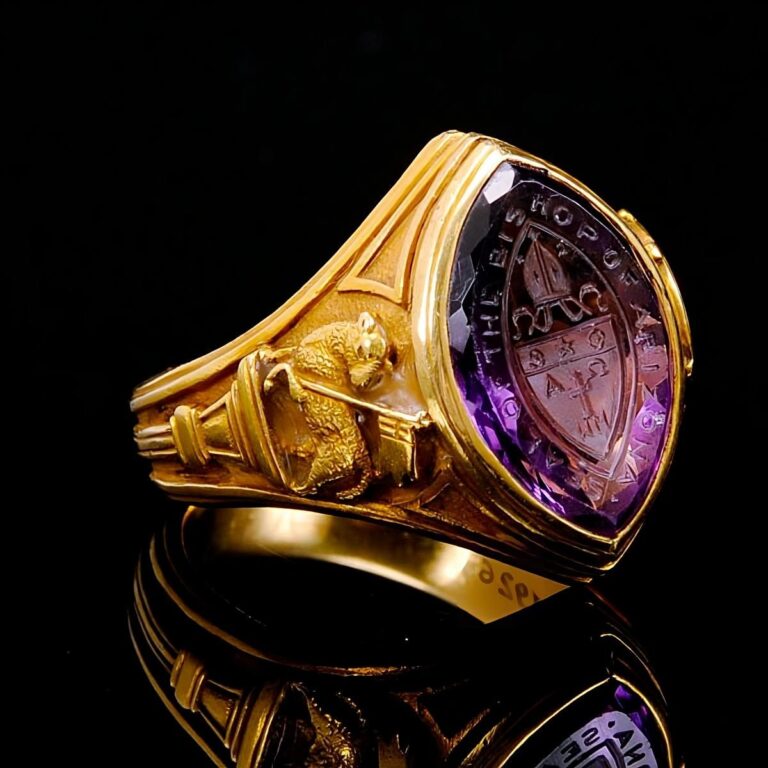
How to Sell an Antique Intaglio Ring
If you would like to sell an antique intaglio ring, or another piece of fine jewelry (like a pendant or brooch) set with an intaglio gemstone, it’s important to contact an estate jeweler with deep experience in antique jewelry — as intaglio items don’t come onto the market as often as other types of fine jewelry.
Carl Blackburn of C. Blackburn Jewelers has been a California estate jeweler for over 30 years, following in the footstep of his father, who was also an estate jeweler. Carl is experienced in antique intaglio rings, as well as their resale value, all of which translates into higher cash offers for his customers.
Carl works with sellers nationwide, as well as local sellers, from his boutique jewelry store in La Jolla. Clients choose him versus trying to sell their item via an auction house, because Carl pays immediately and fairly. Thus eliminating the long wait times, fees, and hassles involved in dealing with an estate jewelry auction.
Get started now by telling Carl a little but about the antique intaglio ring or jewelry you would like to sell. Send him a message and photos of your item at 619-723-8589, or leave him a voicemail at 858-251-3006.
You also can contact Carl directly via email by using the contact form below.
